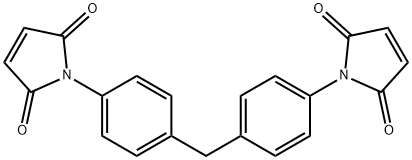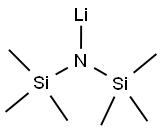Bis(trimethylsilyl)carbodiimide
Synonym(s):N,N′-Methanetetraylbis[1,1,1-trimethylsilylamine];N,N-Bis(trimethylsilyl)carbodiimide;1,3-Bis(trimethylsilyl)carbodiimide
- CAS NO.:1000-70-0
- Empirical Formula: C7H18N2Si2
- Molecular Weight: 186.4
- MDL number: MFCD00051538
- EINECS: 213-673-2
- SAFETY DATA SHEET (SDS)
- Update Date: 2024-07-25 20:04:51

What is Bis(trimethylsilyl)carbodiimide?
Chemical properties
clear colorless liquid
The Uses of Bis(trimethylsilyl)carbodiimide
Reactant for preparation of:
- 4-substituted methoxylbenzoyl-aryl-thiazole analogues as potent and orally bioavailable anticancer agents
- O-silylurethanes
- Porous SiCN materials
- Luminescent diketo-pyrrolo-pyrrole analog
- Hard thin films of silicon carbonitride SiCN as potential protection coatings against wear and corrosion of metals
- Ceramic materials
Properties of Bis(trimethylsilyl)carbodiimide
| Melting point: | −23 °C(lit.) |
| Boiling point: | 164 °C(lit.) |
| Density | 0.821 g/mL at 25 °C(lit.) |
| refractive index | n |
| Flash point: | 109 °F |
| storage temp. | Flammables area |
| form | Crystalline Powder, Crystals and/or Chunks |
| color | White or pale yellow to beige |
| Specific Gravity | 0.821 |
| Hydrolytic Sensitivity | 4: no reaction with water under neutral conditions |
| Sensitive | Moisture Sensitive |
| BRN | 2042082 |
| CAS DataBase Reference | 1000-70-0(CAS DataBase Reference) |
| EPA Substance Registry System | Silanamine, N,N'-methanetetraylbis[1,1,1-trimethyl- (1000-70-0) |
Safety information for Bis(trimethylsilyl)carbodiimide
| Signal word | Danger |
| Pictogram(s) |
 Flame Flammables GHS02  Exclamation Mark Irritant GHS07 |
| GHS Hazard Statements |
H225:Flammable liquids H226:Flammable liquids H302:Acute toxicity,oral H315:Skin corrosion/irritation H319:Serious eye damage/eye irritation H335:Specific target organ toxicity, single exposure;Respiratory tract irritation |
| Precautionary Statement Codes |
P210:Keep away from heat/sparks/open flames/hot surfaces. — No smoking. P233:Keep container tightly closed. P240:Ground/bond container and receiving equipment. P261:Avoid breathing dust/fume/gas/mist/vapours/spray. P264:Wash hands thoroughly after handling. P264:Wash skin thouroughly after handling. P270:Do not eat, drink or smoke when using this product. P280:Wear protective gloves/protective clothing/eye protection/face protection. P305+P351+P338:IF IN EYES: Rinse cautiously with water for several minutes. Remove contact lenses, if present and easy to do. Continuerinsing. P370+P378:In case of fire: Use … for extinction. P403+P235:Store in a well-ventilated place. Keep cool. P501:Dispose of contents/container to..… |
Computed Descriptors for Bis(trimethylsilyl)carbodiimide
New Products
4-AMINO-TETRAHYDRO-PYRAN-4-CARBOXYLIC ACID HCL 4-(Dimethylamino)tetrahydro-2H-pyran-4-carbonitrile 4-Aminotetrahydropyran-4-carbonitrile Hydrochloride (R)-3-Aminobutanenitrile Hydrochloride 3-((Dimethylamino)methyl)-5-methylhexan-2-one oxalate 1,4-Dioxa-8-azaspiro[4.5]decane 5-Bromo-2-nitropyridine Nimesulide BP Aceclofenac IP/BP/EP Diclofenac Sodium IP/BP/EP/USP Mefenamic Acid IP/BP/EP/USP Ornidazole IP Diclofenac Potassium THOMAIND PAPER PH 2.0 TO 4.5 1 BOX BUFFER CAPSULE PH 9.2 - 10 CAP SODIUM CHLORIDE 0.1N CVS ALLOXAN MONOHYDRATE 98% PLATINUM 0.5% ON 3 MM ALUMINA PELLETS (TYPE 73) LITHIUM AAS SOLUTION 2-Bromo-1-(bromomethyl)-3-chloro-5-nitrobenzene 2-Bromo-3-nitroaniline N-(3-Hydroxypropyl)-N-methylacetamide 3-Bromo-6-chloropyridazine 4-ethyl-3-nitrobenzoic acidRelated products of tetrahydrofuran








You may like
-
 Bis(trimethylsilyl)carbodiimide CAS 1000-70-0View Details
Bis(trimethylsilyl)carbodiimide CAS 1000-70-0View Details
1000-70-0 -
 Bis(trimethylsilyl)carbodiimide 95% CAS 1000-70-0View Details
Bis(trimethylsilyl)carbodiimide 95% CAS 1000-70-0View Details
1000-70-0 -
 1823368-42-8 98%View Details
1823368-42-8 98%View Details
1823368-42-8 -
 2-(3-(tert-butyl)phenoxy)-2-methylpropanoic acid 1307449-08-6 98%View Details
2-(3-(tert-butyl)phenoxy)-2-methylpropanoic acid 1307449-08-6 98%View Details
1307449-08-6 -
 Ethyl 3-(furan-2-yl)-3-hydroxypropanoate 25408-95-1 98%View Details
Ethyl 3-(furan-2-yl)-3-hydroxypropanoate 25408-95-1 98%View Details
25408-95-1 -
 2-Chloro-5-fluoro-1-methoxy-3-methylbenzene 98%View Details
2-Chloro-5-fluoro-1-methoxy-3-methylbenzene 98%View Details
1805639-70-6 -
 1784294-80-9 98%View Details
1784294-80-9 98%View Details
1784294-80-9 -
 Lithium ClavulanateView Details
Lithium ClavulanateView Details
61177-44-4
Statement: All products displayed on this website are only used for non medical purposes such as industrial applications or scientific research, and cannot be used for clinical diagnosis or treatment of humans or animals. They are not medicinal or edible.